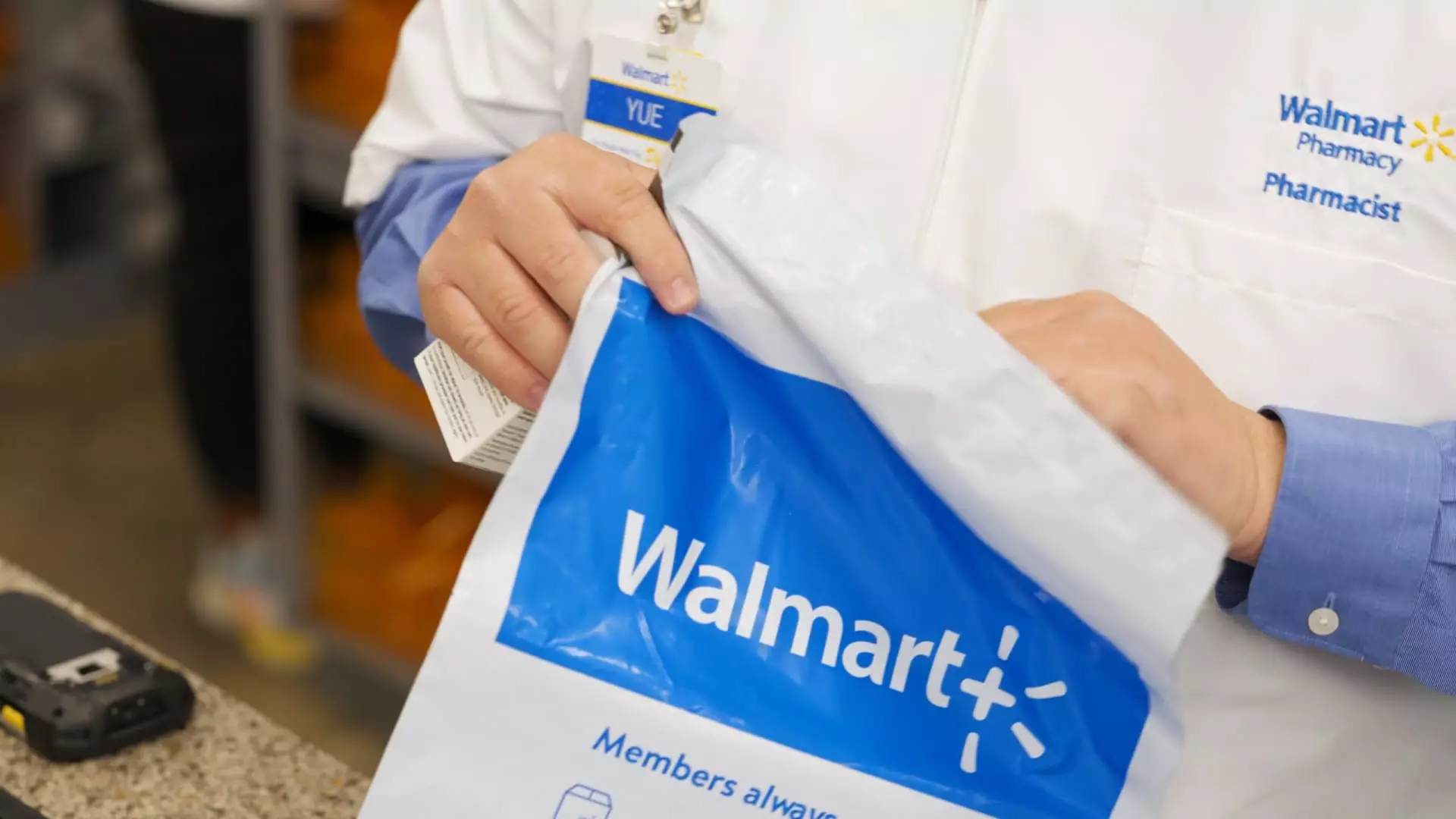The retail pharmacy landscape in the United States is undergoing a seismic shift, as Walmart positions itself to capture a larger share of the growing healthcare market. With CVS and Walgreens struggling to maintain profitability, Walmart announced its new prescription delivery service, aiming to create more convenience for consumers across six states and potentially all but one by January. In light of the healthcare industry’s competitive nature, this move could solidify Walmart’s dominance while compounding challenges for traditional drugstore chains.
On a recent Tuesday, Walmart revealed plans to roll out prescription deliveries in states such as Arkansas, Missouri, New York, Nevada, South Carolina, and Wisconsin. Customers can enjoy the convenience of receiving their medications delivered straight to their doorsteps, in addition to other household essentials. The retailer’s intention to expand this service, with an eye on 49 states by the end of January, reveals its commitment to meeting customer demands while capitalizing on the rapidly growing health and wellness sector.
Tom Ward, Walmart’s Chief E-Commerce Officer, confirmed that pharmacy deliveries were among the most requested services from customers. The convenience of combining prescription delivery with grocery and household deliveries creates a compelling one-stop-shop experience, which is particularly attractive to consumers increasingly focused on convenience amid busy lifestyles. Customers can have medications delivered alongside everyday items, reinforcing the notion that Walmart is positioning itself as a comprehensive service provider, rather than just a retailer.
The introduction of Walmart’s prescription delivery service poses a serious threat to CVS and Walgreens. Both companies have already faced significant pressure over falling stock prices and declining profits. As consumer preferences evolve, traditional drugstores are being forced to reconsider their business models. This trend is compounded by rising pressures from competitors such as Amazon and even grocery chains that are diversifying their product offerings.
Historically, both CVS and Walgreens have held substantial market shares in the prescription drug space—CVS capturing over 25% and Walgreens nearly 15% in 2023. However, with Walmart holding only 5%, questions about future market dynamics arise. Will Walmart’s new service siphon away a substantial amount of market share from these established players? The swift expansion of delivery options across various markets illustrates Walmart’s aggressive strategy, and its success could be another nail in the coffin for a sector already teetering on the edge.
Consumer demand for convenience is increasingly dictating how retail pharmacy services evolve. The shift to online shopping and delivery methods has illuminated a clear preference for streamlined access to medications. In this context, Walmart’s offering to include safety measures such as tamper-evident packaging aims to alleviate concerns over the security and reliability of medications delivered to customers’ homes.
While CVS and Walgreens do offer prescription delivery options—ranging from same-day to two-day service—Walmart’s commitment to blending these services with everyday groceries and household items sets it apart. Walmart’s emphasis on convenience, paired with accessibility, could provide consumers with an appealing alternative to traditional pharmacies.
Despite the current struggles faced by CVS and Walgreens, Walmart is also contending with its own challenges in the healthcare arena. The competition in this space necessitates not only innovative services but also cost-effective operations, especially as Walmart continues to brand itself as a low-cost healthcare provider through plans to establish clinics aimed at affordability.
The financial implications of expanding the prescription delivery service are profound. Walmart has already seen a 54% increase in its stock price for the year, while CVS’s shares fell approximately 26% and Walgreens plummeted nearly 60%. Amidst such disparities, cash-strapped traditional drugstores have resorted to drastic measures—CVS has announced leadership changes and plans to trim operational costs by about $2 billion over several years, including job cuts and store closures.
As we move further into 2024, the retail pharmacy landscape will likely continue to evolve significantly, with digital solutions and delivery services taking center stage. Walmart’s quick adaptation to consumer desires indicates a broader trend in the industry where traditional models may be replaced by modern, efficient services.
The potential of Walmart’s prescription delivery service to become a game changer highlights not only the need for drugstore chains to innovate but also the importance of aligning services with consumer expectations. With healthcare and wellness becoming increasingly paramount in consumer spending habits, the role of retail pharmacies will likely continue to transform, opening the door for new players and practices in this critical sector of the economy.


Leave a Reply